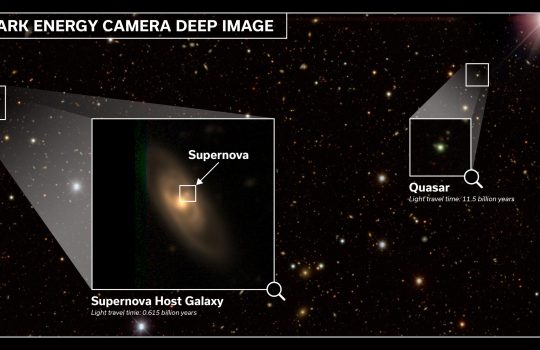DECam’s Deep View of Abell 3667 Illuminates the Past of a Galaxy Cluster and the Future of Astronomical Imaging
NIORLab, August 5, 2025
The Dark Energy Camera, designed specifically for the Dark Energy Survey and built and tested at Fermilab, captured an image assembled from a total of 28 hours of observations. The image gives a tantalizing hint of how intracluster light will be revealed by the Rubin Observatory’s Legacy Survey of Space and Time.




